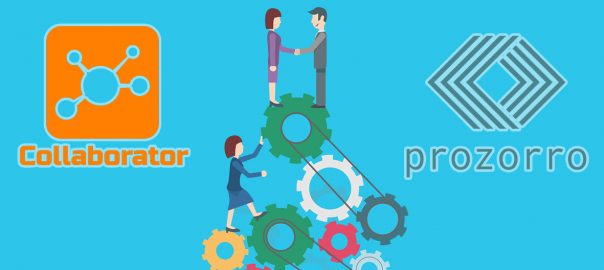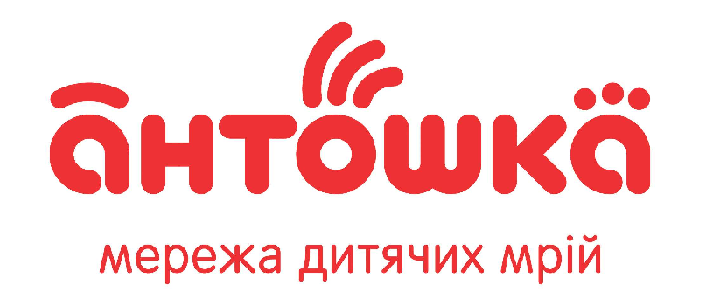
Management by Objectives in Collaborator: experience of ProZorro
In release of Collaborator 1.30.0, we introduced new functionality “Management by Objectives”. It was created in collaboration with “ProZorro” as a modern approach to organization management.
Today we want to talk about how the idea of new management principles was introduced in ProZorro and history of its implementation. We asked its creators Yuriy Bugay and Oleksandr Starodubtsev to share details of this process.
 Yuriy Bugay: one of the creators of the electronic trading system ProZorro, formerly head of Government procurement regulation Department at Ministry of Economic Development and Trade of Ukraine, now head of the eHealth project office
Yuriy Bugay: one of the creators of the electronic trading system ProZorro, formerly head of Government procurement regulation Department at Ministry of Economic Development and Trade of Ukraine, now head of the eHealth project office
Facebook: https://www.facebook.com/yuriy.bugay

Oleksandr Starodubtsev: head of Government procurement regulation Department at Ministry of Economic Development and Trade of Ukraine, coordinator at “Nova Krajina” Civil Platform and “Transparent Procurement” Civil Initiative, creator of the electronic trading system ProZorro
Facebook:
https://www.facebook.com/OleksandrStarodubtsev
 Miroslav Botsula: Co-founder and development coordinator of LMS Collaborator
Miroslav Botsula: Co-founder and development coordinator of LMS Collaborator
Facebook: https://www.facebook.com/miroslav.botsula
How it was started?
ProZorro – is an electronic system of govern procurement, which replaced paper tenders in 2016. ProZorro’s team constantly supports and improves this system. The system involves new people and new organizations into reform process in Ukraine. Such changes required new principles of process management and new tools, which allow setting goal for the entire team in a single environment.
Oleksandr:
– After the launch of ProZorro, we began to address the issue of the organization’s stability. There are many people in large organizations, goals are not always clear to everyone, and in order to solve this problem, we have thought about building a special HR-system.
Yuriy:
– When an organization grows to a certain size, the number of projects that people work on increases. In addition, the ability to focus the team on achieving of specific goals is reduced. This has already happened at ProZorro when the team was consisting from more than 300 people (both internal and external). Then it was hard to synchronize and focus efforts of the whole team on something specific.
In order to put things right, we began to actively use OKR principle – Objectives and Key Results. We wrote out key objectives, linked to them five additional subtasks, which included expected key results.
OKR methodology is widely used in the world – Google has been using it since 1997. We also adopted this methodology. However, we use it incompletely, only the key elements. For example, cascading large goals to individual ones. Superior is assessing these individual goals to define job performance and give feedback.
We need this at least in order to see whether our team is approaching to achieve a specific goal or not. We needed a certain tool that would allow us to bind goals to each employee and monitor what is happening. At that time, we made a basic version of OKR together with Collaborator. We wanted to try this tool at a state level, e.g. Cabinet of Ministers’ operating plan and monitoring of its implementation.
The main task of Management by Objectives tool is to support the cascaded system consisting of goal-objectives and their subtasks, which allows assigning the priority of each objective and distributing them among employees.

The idea of “Management by Objectives” while developing of the first version
Oleksandr:
– We made a trial HR project, which resulted in the understanding that you need two things for a High performance team:
1) Achieve objectives,
2) These objectives should be coordinated with each other and cascaded (great strategic objectives are split into smaller ones – initiatives, projects, etc.).
These elements should be assigned to responsible person and have definite time for fulfilment. This is how the organization’s strategy is cascaded. For example, the general strategy of ProZorro is to build an electronic system. This goal is divided into many subtasks-initiatives: to adopt a standard, to write a text, to teach everyone, and then are divided into projects that are assigned to people, departments, etc. Now this approach is being used and improved.
The logic is complex: everyone must act by the same rules. An employee should understand that he is a piece of big and very important project, and that he does not just work on a process that is not clear to anyone and might end with nothing.
“We are not laying bricks — we are building temple”.
Yuriy:
According to OKR methodology, goals should be inspiring and motivating for achieving of them. In this approach, achieving of 70% of the goal is already a success by itself. Nobody expects achievement of 100%.
All goals should be logically linked. For example, we have two goals: “Launch the professional procurement center before March 2018 that will allow us to teach a certain number of customers.” This center was written out as an objective, but we also had a goal to improve the level of professional procurement.
Naturally, establish of the center will be one of the key results in improving the level of professional procurement. Therefore, the goal of “improving the professional level of procurement before March 2018” will contain a key result – the goal of “launching the center.”
In turn, the “launching the center” will include its subtasks-goals.
There is a logical cascading from the end. We begin from critical objectives and end with less critical ones. If you did not finish on time – it would not be crucial for achievement of the objective. Cascading goes from the final to the initial point.
This was implemented in the first version of Managing by Objectives (MBO) tool.

The first implementation of “cascade of tasks”
Miroslav:
During this pilot project, we implemented key elements of OKR methodology in Collaborator. This tool allows you to create a cascade of tasks and subtasks, then assign an employee to it, specify terms and priorities. When the responsible employee marked percentage of the task, he was automatically warned about possible failure to meet time limit for task fulfilment. This should have affected responsibility of the employee, because their task on the cascade slowed progress towards the overall goal of the whole team. However, classic OKR is effective in organizations with a high level of independence and punctuality of all employees. In practice, it turned out that most employees need help from managers or mentors to properly understand their goals and objectively assess their status. Therefore, the concept of management by objective was soon revised.
Functionality of MBO changed and improved while using it – something was removed, some functions were changed and others were simplified.
The first version of task list and control over their execution
Oleksandr:
Last year, when we worked on the first implementation of MBO, the maximum efforts were directed to a tool part. We were keen on the idea of using OKR technology, like Google and other big modern companies. The tool was ready and every necessary thing was shown in examples.
However, we did not take into account specifics and logics of work in our organization – we chased after the tool and it was our mistake. First, we had to clearly define our processes, but we did it only six months later, when we tried the first version of MBO based on OKR. We tried to write out our strategic tasks into a ready-made tool and faced significant inconveniences. In the classical interpretation, tool based on OKR did not fit us – it was another philosophy in it.
At the second time we did everything right – first we rebuilt and tested our strategic work processes in practice, and then we began to implement them in Collaborator.
We did not have a task to do it super-right – like the book teaches. In theory, it was necessary to sit together with analysts and write out all the requirements, write a big concept – that’s right approach, but it takes lots of time. You can move along the fact that you generally understand what needs to be done. You describe it to developers, and developers do it. Then you correct, amend, and rework some things together with developers.
This method is much faster, because it is interactive.
How does it work now?
“Strategic Objectives” functionality allows you to build a tree of the organization’s tasks from the highest level to the individual objectives of each employee. At each level, we assign employee who is responsible for successful achievement of all objectives of the level.
Oleksandr:
– HR-activity operates a large amount of data about people and their work. It is convenient, when all such data is collected in one system and there is a possibility to comprehensively analyze it.
Each organization has its own approach to such a system. In Ukraine, most enterprises build them based on 1C. We made everything in Collaborator – except for a knowledge base about purchases and working processes. Information about employees and their work is stored in Collaborator. “Management by Objectives” tool is the most important element of the HR-system. It helps everyone to understands their own goals, objectives of managers and how this all is interconnected and works for development of the organization.
Work strategy in ProZorro applies five levels of objective cascading. The main “Directions and evolutionary objectives” of the organization’s development is divided into “Strategic Objectives”. They, in turn, split up into “Initiatives”, and those to “Projects”. Each project is divided into “Individual objectives” for each participant in the project team.
Yuriy:
– We formed five key objectives for the system, and wrote out five key results for each of these objectives.
We started from global ambitious objective. For example, keep level of transparency of purchases, increase level of competitiveness, raise level of professionalism, enter international arena, and build team of professionals.”

Now
What does it mean to keep the level of transparency? This means that one day 100% of government purchases will be conducted through electronic system ProZorro. Concerning this objective, we wrote out the following: “Well, we need to develop a system; we need to adopt some resolution acts that would allow us to conduct training on basic things to achieve this goal.” In other words, we divided the objective into subtasks by a describing their Key Results. Same with all other objectives.
Thus, we descended the cascade down from large objectives to smaller ones. This allowed each team member to understand his place and role in large number of projects as well as in what way he brings whole team closer to achieving of global objectives.
Are employees ready for this approach in daily work?
Yuriy:
Any innovations meet resistance. Some of them bear fruit right away, others – do not at all. Employees need to get used to some of the innovations – to adopt or change themselves.
Oleksandr:
We have just started implementation of this management system. Prior to Collaborator, our employees conducted all evaluations of their tasks in Excel spreadsheets. They generated tons of data and many Excel sheets. Now we take this data and systematically transfer it to MBO tool in Collaborator.
After starting of MBO tool usage, we raised new ideas for improvement and then Miroslav’s team steps in – they adopt functionality of the tool for the emerging circumstances. This is an interactive process.
I am absolutely sure that the staff will like what we are creating now. This is much better and more convenient than a bunch of excel files, which may confused anyone. I will be able to tell you the exact results of the implementation within four months.
How are you going to evolve this functionality?
Oleksandr:
For example, one of the closest tasks – is implementing of automatic change of the status when an objective is met – currently it can be changed only manually.
Over time, there will be more functions for user convenience and integration with HR functions.
We plan to add a large block called “Evaluation according to development plans” For HR needs, which is an assessment of competencies. Therefore, each employee has a plan that describes all competencies to be developed, and this plan includes additional material: books, courses, feedback, etc. Achievement of success by these objectives will significantly influence growth of certain competencies.
We are going to develop this block together with Collaborator, as soon as MBO functionality will tested in actual working mode.
Miroslav:
One of HR tasks is staff development. Moreover, level of development is determined by personal and professional competencies. Nevertheless, assessing of this level in objective way is a very difficult task. Collaborator possesses tools for professional testing, conducting 360 surveys, etc. to “measure” level of competencies. However, these tools not always give aggregate picture. Achieving of objectives is also an indicator of a person’s competency, and we are sure that this is one of objective criteria for such an assessment. Therefore, linking of MBO with competency assessment can give good results and new opportunities for HR. And, we are already working on this function.



































